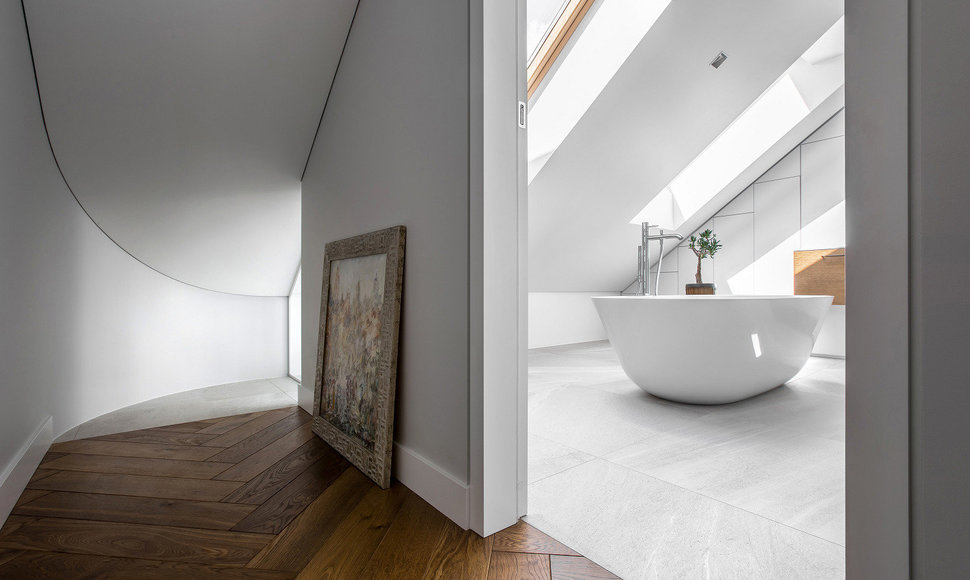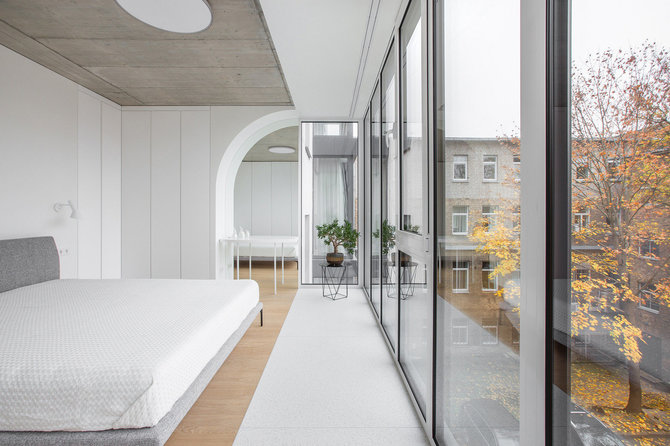These preferences were revealed by a survey commissioned by Darnu Group, one of Lithuania’s largest residential, work and leisure space developers, and performed by the market and public opinion research company Spinter Tyrimai.
The survey sought to find out the Lithuanian people’s opinion on their dream home and its furnishings.
Darnu Group director of property management Mantas Umbrasas says that the survey results are in line with the requirements of customers newly settling into their homes as perceived by real estate developers every day, but fresh winds are already being felt clearly among the prevailing trends.
“The survey uncovered an increased desire among respondents to leave concrete flooring alone, and this is no coincidence. For example, in higher class homes, usually individual solutions are sought and there is no fear of choosing less popular materials, which allow forming the interior as per one’s taste down to the most minute details. Lithuanians have always enjoyed the process of furnishing their homes, and so while in discussions with future residents for the Paupys area that we are developing, we note that interior specialists are now more often employed for this and that there is an increasing inclination to experiment,” M. Umbrasas reveals.
According to Mr. Umbrasas, such decisions in many cases are also based on individuals’ desire to save more personal time and ensure high-quality decisions chosen by professionals. Hence, those purchasing higher class homes in Vilnius typically choose basic furnishings and leave the rest to architects or designers.
Universal and time-tested – wood
The survey results revealed that when furnishing their dream home, more than two thirds (70 per cent) of respondents would choose parquet flooring in their residential rooms. Every tenth (10 per cent) would use tiles, seven per cent would opt for carpeting, six per cent would choose linoleum and three per cent would be inclined to leave concrete flooring alone.
Parquet is typically the choice of major city residents with the highest education and higher income levels.
Aidas Barzda - the architect at YCL Studio, says that there are established explanations as to why it is so popular and important in our home spaces, with reasons based on the social environment, climate conditions and tradition.
According to A. Barzda, the residents of Northern regions prefer wood because it is a surface that keeps the home cosy and warm during the cold period of the year. Furthermore, wooden flooring is a match for any style.
“Be it contemporary or traditional interiors, you will always be able to find a suitable wooden flooring choice for it, and this is an important aspect for both the residents and architects. No less important is that wooden floors can ‘adapt’ the budget. There are numerous types of wooden flooring - its texture, colour, board size and width can vary,” the specialist states.
He adds that natural materials very rarely go out of fashion, and so wood remains a surface uninfluenced by changes in trends even after many years. “Practical factors aren’t insignificant as well – wooden flooring is easy to maintain and renew,” A. Barzda notes.
According to the architect, despite long-standing traditions on wooden flooring, Lithuanians are increasingly prepared to experiment. The use of large-format stone tiles is on the rise because the colour and texture opportunities for these have improved, their fabrication is reaching particularly high-quality levels, and it closely imitates natural materials. Homogenous flooring – epoxy and concrete – is also being discovered.
No bad choices
Sixty-nine per cent of respondents in the survey stated they would like to paint their walls, while every fourth (25 per cent) would choose wallpaper. Based on the survey, wallpaper is preferred by those aged 56 years and older, as well as respondents with lower levels of education.
According to A. Barzda, both painting and wallpapering have their pros and cons, so that there are no bad choices.
“Painting offers an endless palette of colours and it can be easily adjusted to the interior. Wallpaper offers interesting and complex geometric patterns, allowing it to enliven certain spaces of the home. Wallpaper is also longer lasting and easier to maintain, though not suited for humidity. So inevitably, paint has its advantages in certain spaces,” the specialist states.
According to the architect, the preference older individuals feel for wallpaper is likely a remnant of the past. Previously, many people would repair their own homes because wallpapering is a simple task, which does not demand any special preparation of the walls such as wall smoothing, or sanding.
“Meanwhile, those interested in experimenting have a wide range of materials and variations to choose from: whether it be to make use of decorative plaster or making use of concrete and epoxy, creating homogenous surfaces that cover the entire surface and can be homogeneous with the floor,” A. Barzda says.
The TV – one of the most important items in the home
The survey results also revealed that 65 per cent of respondents would like to have smart heating and ventilation installed in their homes. A little over half (52 per cent) would install automated home security, movement sensors and video cameras in their home.
In terms of ventilation, 36 per cent of respondents would like air conditioning in their home. Thirty-three per cent of respondents would choose recuperative systems.
According to the survey, homes should also contain the following items: a TV or several TVs (70 per cent), plants (66 per cent), paintings and other artwork (57 per cent) and a fireplace (57 per cent).
The survey was performed across Lithuania, with 1014 respondents aged 18 to 75 asked about the furnishing of their dream home.













